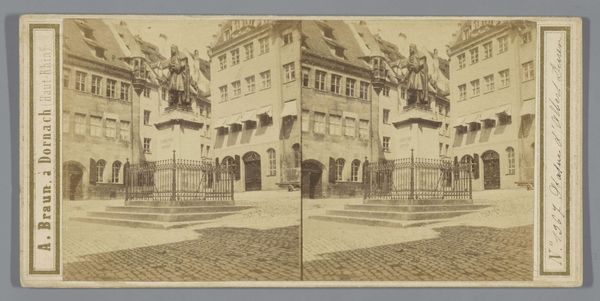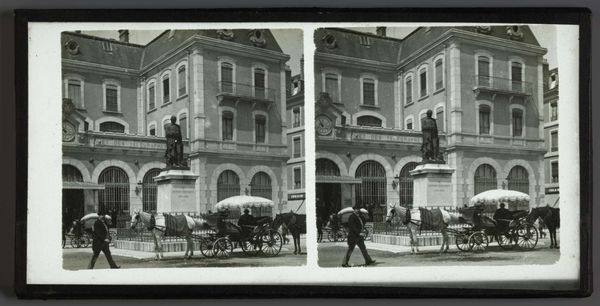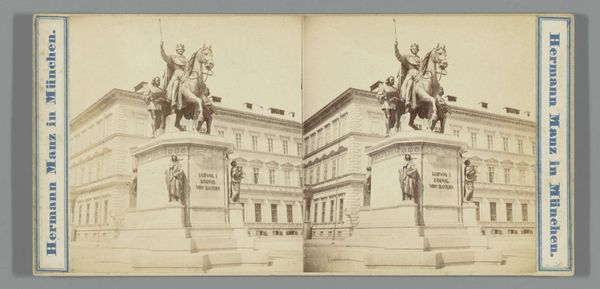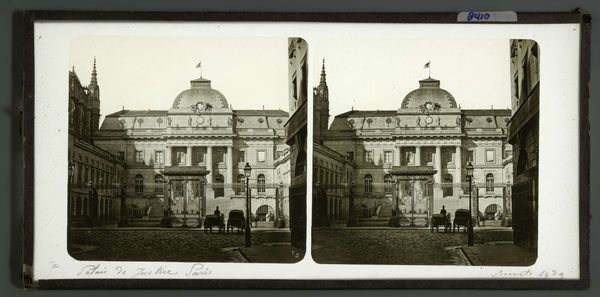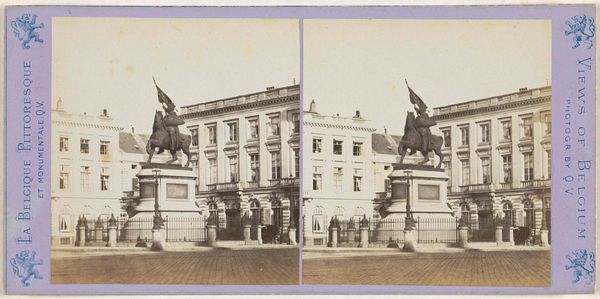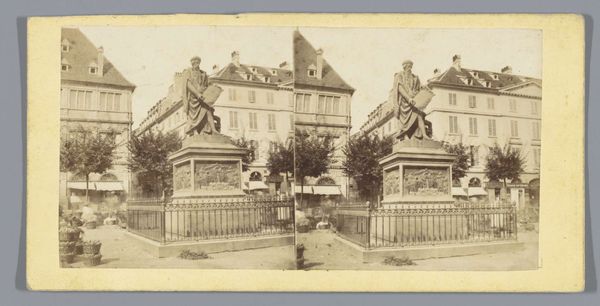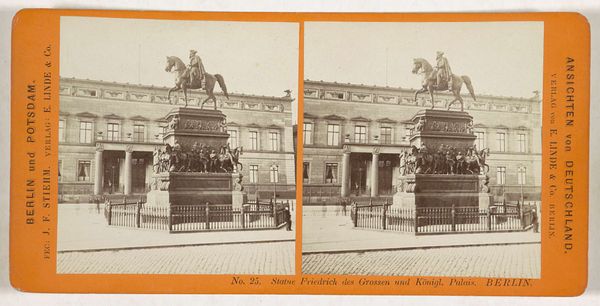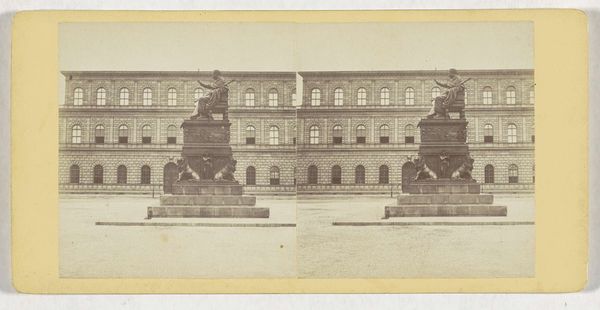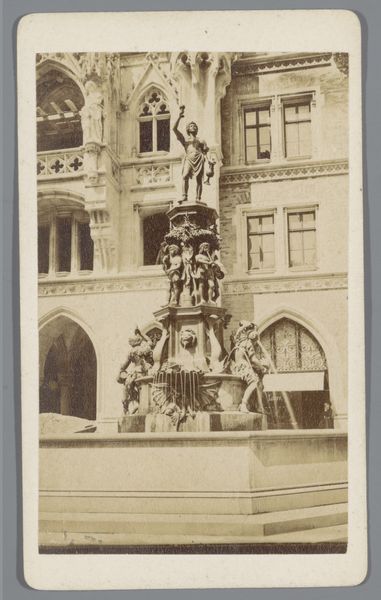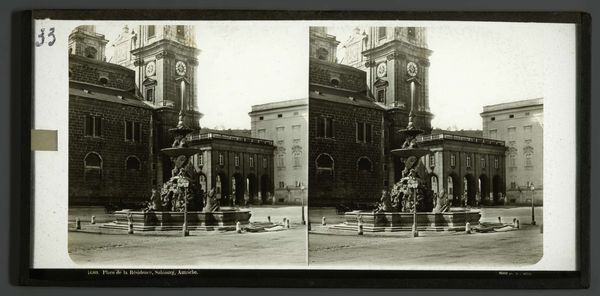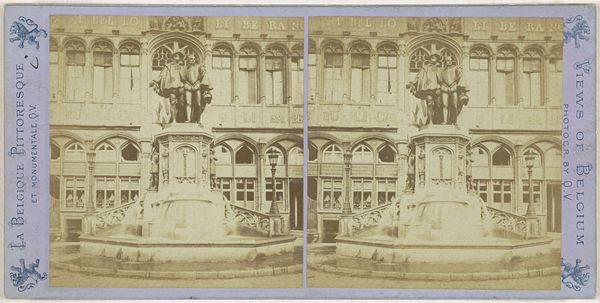
print, bronze, public-art, photography, sculpture
# print
#
sculpture
#
bronze
#
public-art
#
photography
#
sculpture
#
cityscape
Dimensions: height 85 mm, width 170 mm
Copyright: Rijks Museum: Open Domain
Editor: This is a photographic print of the "Monument for Josef Radetzky von Radetz in Prague," dating between 1860 and 1890. The image gives a striking depiction of this imposing bronze sculpture against the city backdrop. The overall tone seems very formal and grandiose. What elements of the composition do you find most compelling? Curator: The most significant element lies within its spatial relationships. Note the pronounced verticality, how the sculpture’s ascending form contrasts with the rigid grid of the architecture. How do the linear components and their convergence emphasize specific facets, for example, surface qualities of stone versus patinated bronze? Editor: The monument’s elevated position is interesting. It creates a stark contrast between the human scale figures and the broader cityscape. Are there philosophical components evident here, specifically in terms of its forms, that resonate to other architectural designs of this period? Curator: Absolutely. In its mass and details we see that classical traditions intermingle with rising civic aesthetics. The calculated placement creates hierarchy, speaking not just of memorial, but its relationship between artwork and viewer: an impositional discourse. Now observe surface materiality, the smoothness against textured treatments, to elicit diverse sensation. Is this monument’s design one thing of great import within its total form? Editor: Well, considering the relationships between different architectural elements helps to refine what’s present. Looking at it now, I can appreciate the contrasting textures and linear arrangement much more deeply. Curator: Precision in art demands constant return. Even the photograph itself, the grain and tone contribute an added visual dialectic.
Comments
No comments
Be the first to comment and join the conversation on the ultimate creative platform.

